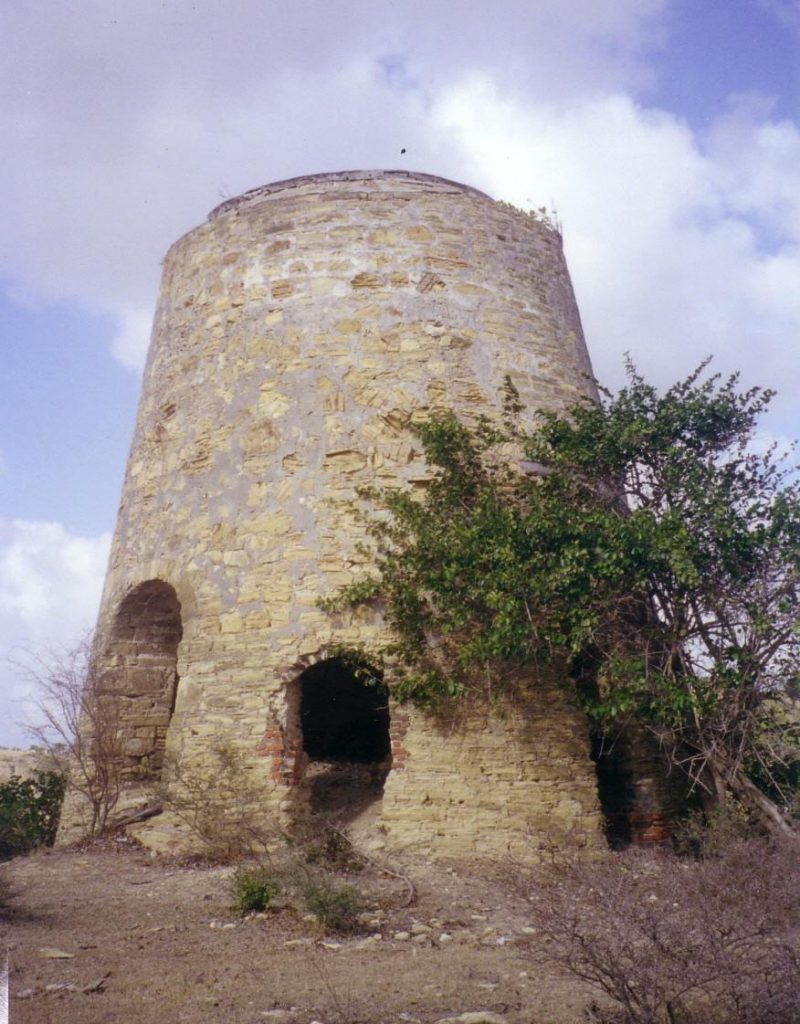About
Type: Extant
Parish: St.John
Founding date: 1700s
See on Google Maps!

Current Status
A landfill now occupies the site of this former plantation. It services the entire island, with garbage filling it at an alarming rate.
The sugar mill is still perched on the side of the hill, with many machinery parts scattered around the property. It was converted from wind power to steam in the 1880’s, and a chimney built at that time also is still standing. Most of the sugar mill machinery was shipped back to England during World War II to aid the war effort, but that activity seems to have been abandoned in mid-collection.
Estate Related History/Timeline
In 1716, James Nesbit purchased Lady Cook’s houses and wharf, and on July 16, 1722, the Cook’s plantation and other moity of 118 negroes was sold to John Otto-Baijer. Vere Oliver, Volumes I & III.
Bastian Baijer was the first Baijer to settle in Antigua, arriving from The Netherlands. He was accompanied by a friend, Peter Coone, who received 500 acres in St. John’s Division.
By 1787, John Otto-Baijer owned a plantation in the Five Islands Division as well as Denfield’s (#25), Dewitt’s, Otto-Baijer’s (#16) and Cook’s. In the early 1800s, John Duer Cranstoun was manager of both Union (#27) and Cook’s estates. The Cranstoun family later went on to own Potter’s (#47), Cochrane’s (#83), and Thomas’s (#138).
When the British Parliament abolished slavery in 1833, the Cook’s Plantation was granted a Legacy award (Antigua 97) of £4,103. 18s. 7p. for freeing 254 enslaved. the only awardee was Elwin.
In 1941, the Antigua Sugar Factory, Ltd., estimated cane returns of 900 tons from 513 tons of cane delivered; zero acres of peasant land on the estate.
In 2011, Prime Minister Baldwin Spencer praised the contribution of MSP Management & Development Company and the Royal Bank of Trinidad & Tobago as they broke ground on a $10 million affordable housing project at Cook’s estate. “Not only will this project increase the housing stock in this community, but during the construction phase . . . many people will receive employment. The contribution to the construction sector by this project will be significant,” the Prime Minister said. The project, called Eldina Gardens, plans to build 120 affordable homes.
Enslaved People’s History
Based on contemporary research, we have little information to share about the enslaved peoples from this plantation at this time. They probably had at maximum 254 people working at that plantation. When the British Parliament abolished slavery in 1833, the Cook’s Plantation was granted a Legacy award (Antigua 97) of £4,103. 18s. 7p. for freeing 254 enslaved. the only awardee was Elwin. We will continue our quest for more information about these vital individuals.
Ownership Chronology
- 1700’s: John and Lady Elizabeth Cook
- 1716: Houses and wharf sold to James Nesbitt
- 1722: John and Edward Otto-Baijer
- 1750: Honorable Edward Otto-Baijer. Baptized 1709; d. 1779
- 1790: John Otto-Baijer. d. 1796. (1777/78 map by cartographer John Luffman.)
- 1829: Heirs of Lovell Langford Hodge. b.1807. 604 acres, 253 slaves
- 1843: Langford Lovell Hodge
- 1851: Langford Lovell Hodge
- 1872: John C. Anthonyson. 500 acres, plus 10 held by R. S. Heagan
- 1891: John Joaquin
- 1921: F. A. Joaquin. 474 acres